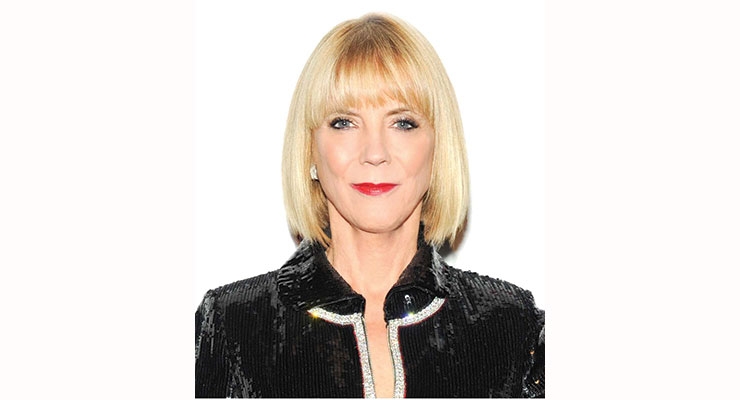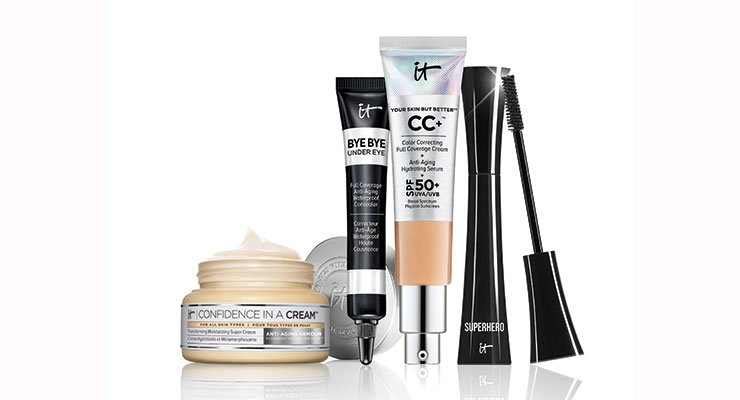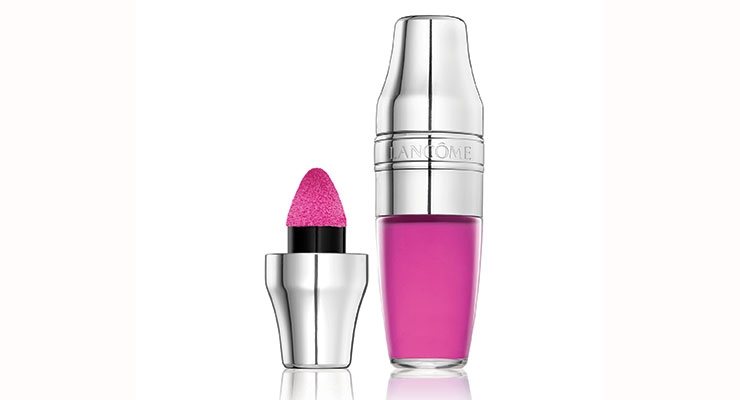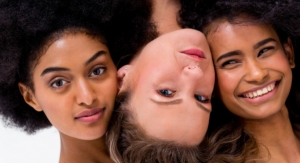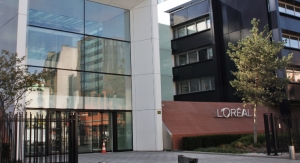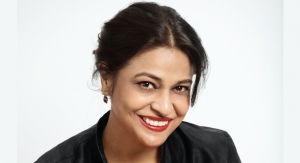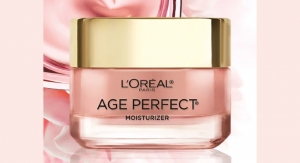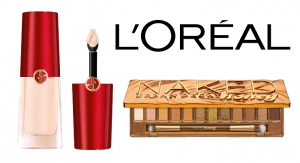11.02.16
Update: L’Oréal ranks at #1 on our latest report Top 20 Global Beauty Companies 2021.
France
www.loreal.com
Beauty Sales: $27.6 billion
Key Personnel: Jean-Paul Agnon, chairman and chief executive officer; Laurent Attal, executive vice president, research and development; Nicolas Hieronimus, president, Luxury and Active Cosmetics divisions; An Verhulst-Santos, president professional products division; Brigitte Liberman, president, Active Cosmetics Division; Alexis Perakis-Valat, head of L’Oréal’s Consumer Products Division; Alexandre Popoff, executive vice president, Eastern Europe and Africa, Middle East; Lubomira Rochet, chief digital officer; Nathalie Roos, president, Professional Products division; Frédéric Rozé, executive vice president, Americas zone; Carol Hamilton, group president L’Oréal Luxe USA; Xavier Vey, president and chief operating officer, Luxe; Jochen Zaumseil, executive vice president, Asia Pacific Zone; Vianney Derville, executive vice-president, Western Europe Zone.
Major Products/Brands: Hair care, skin care, sun care, color cosmetics and fragrances sold under a variety of brand names in mass, professional, active and prestige channels, including Garnier, L’Oréal Paris, Maybelline, SoftSheen-Carson, IT Cosmetics, NYX, Essie, Kiehl’s, Urban Decay, Diesel, Dark & Lovely, L’Oréal Professional, Kerastase, Redken, Matrix, Shu Uemura Art of Hair, Lancôme, Biotherm, Giorgio Armani, Ralph Lauren, Cacharel, Viktor & Rolf, YSL Beauté, Vichy, LaRoche-Posay, Innerve, SkinCeuticals, Sanoflore; and The Body Shop.
New Products: Elvive by L’Oréal Paris, Ultra Doux by Garnier, NYX Macaroni Lippies, Maybelline Master Brow Pro Palette, Yves Saint Laurent Volupte Tint in Oil, Pro Fiber by L’Oréal Professionnel, Biolage Cleansing Conditioner, Kérastase Thérapiste, The Body Shop Spa of the World, L’Oréal Pretty & Healthy (China), Urban Decay Alice Through the Looking Glass collection, Lancôme Juicy Shaker.
Comments: Still at the top of our list, L’Oréal continues to maintain its title as “the world’s largest global beauty company,” racking up sales of $27.6 billion in 2015, a growth of nearly 4% over the previous year. In the company’s annual report, Jean-Paul Agon, chairman and chief executive officer, noted: “We have stepped up our metamorphosis to the new L’Oréal: more universal, more digital and more sustainable.”
In the midst of a global economic slump, the company’s Consumer Products range fell slightly in the first half of the year, but went on to growth in the second half, adding to the annual positive results in Prestige, Professional and Active Products. The company reported growth in all markets, except for Brazil, which has been plagued by falling currency and turmoil. The French-owned company continues on a vast expansion and diversification roll throughout all corners, categories and markets, in all channels of distribution. With investments of more than $870 million in R&D in 2015, the company was granted 90 patents for packaging and processes, and claimed 1,850 suppliers of packaging and raw materials.
Continuing to pursue all paths, L’Oréal is especially focused on the digital world and compatible acquisitions—especially those with strong social media savvy. In the past year, acquisitions of Urban Decay, and most recently NYX and IT Cosmetics, have skyrocketed them into the social sphere.
Consumer Products accounted for 48.7% of total sales in 2015, while L’Oréal Luxe took a 29.8% share; Professional Products, 14%; and Active Cosmetics 7.5%.
Gains in L’Oréal Luxe were led by Makeup. Overall annual sales in Luxe increased by +6.1% like-for-like and +16.7% based on reported figures. In skin care, Kiehl’s was a top performer. Fragrances, too, were strong thanks to L’Oréal’s three major women’s launches: La Vie Est Belle, Sì and Black Opium, and men’s fragrances Polo Red and Acqua di Giò Profumo. The YSL brand grew an impressive 18.4%, in part, due to the brand’s Volupte Tint in Oil, described as “the first tinted lip oil.”
Across the board, Western Europe accounted for a third of annual sales, with North America following with 27%. The New Markets contributed a percentage just shy of 40%, with more than half of that attributed to the Asia Pacific region.
Hair Care and Makeup proved to be key areas throughout the year, but the skin care category led by nearly 30%. Makeup followed at 23.8%; Hair Care (19.7%); Hair Colorants (12.7%); and Fragrances (9.8%). Africa, Middle East registered the highest percentage sales increase at 12%, followed by Eastern Europe at nearly 10%.
In Hair Care, Redken did particularly well, described as “best in class in the digital field,” becoming the division’s second largest brand, and achieving strong growth in the U.S. Biolage Cleansing Conditioner was a hit as a new alternative to shampoo—one that combines two functions (and packages) in one.
Overall sales at The Body Shop, which has more than 3,100 global doors, dropped a little less than 1%, but skin care sales rose by nearly 10% year over year. Relying on the “naturals” market, the brand regained ground in the UK, which is its No. 1 market.
Online & Digital Acceleration
In 2015, L’Oréal’s online sales increased by nearly 40% to reach $1.4 billion, essentially making e-commerce the equivalent of the group’s No. 5 country. In China, e-commerce accounts for more than 20% of the Group’s Consumer Products Division sales. Like-for-like e-commerce growth was up more than 50% in 2015 and, according to L’Oréal, this is just the beginning.
L’Oréal continues its strong bent on technology as its No. 1 way to reach more than a billion new customers by 2020. In the past year, they have gained huge ground with online blogger “tryouts,” investments in incubator programs, mobile apps including Makeup Genius, and more.
Sustainability is also a key trend at L’Oréal, and the determinant behind the company’s ambitious Beauty for All program. This corporate-wide effort driven by Agon, is a social and environmental responsibility program, which aims to achieve the lofty goal that by 2020, 100% of their products will have an improved environmental or social profile. Among the pillars: the corporate environmental footprint will be reduced by 60%, consumers will be able to make sustainable consumption choices; and all employees will have access to the best level of healthcare coverage and social protection, as well as training; and all of the global giant’s strategic suppliers will participate in L’Oréal’s supplier sustainability program. L’Oréal says under the program, they will enable 100,000 people from socially and financially underprivileged communities to access work.
News of Note in 2016
L’Oréal brought sophisticated hardware and software into Beauty in January 2016, when it launched a stretchable skin sensor called My UV patch. Designed as a wearable, the product is meant to educate users about their exposure to ultraviolet rays. The patch is marketed by the company’s Active Cosmetics brand, La Roche-Posay.
In April, several executive moves were made in preparation for the future leadership of the company as Agon’s contract expires in 2018 (but can be renewed). Alexis Perakis-Valat was named head of L’Oréal’s Consumer Products Division, and is considered a leading contender for the top job.
L’Oréal’s pursuit of technology led to its deal with Founders Factory as an exclusive partner for investments in global beauty tech startups. As part of the agreement, the partners will invest and scale five early stage startups and co-create two new companies from scratch every year.
In line with its reputation for forward thinking and a modern outlook, L’Oréal USA announced the relocation of its corporate headquarters to New York City’s newly developed Hudson Yards complex with sustainable design and state-of-the-art amenities.
With interests in fragrance as well as beauty, L’Oréal acquired niche fragrance brand Atelier cologne.
In July L’Oréal grabbed headlines with its purchase of IT Cosmetics for $1.2 billion.
With more than 300 products and a multi-channel distribution model, the brand is now part of the Luxe Division of L’Oréal.
Looking Ahead
Group sales reported for the first half of 2016 reached $14 billion, an increase of +4.2% like-for-like—but the second quarter came in below analysts’ expectations. Sales growth for the period was achieved in all divisions and geographic zones. The Consumer Products Division had improved, with the largest divisional gain of 4%, reaching $3.4 billion—thanks in part to makeup, and an impressive start in bringing NYX international. During this period, e-commerce sales rose by 33%, and accounted for about 6% of total sales.
Recent acquisitions NYX, Urban Decay and Niely (Brazil) made a “very positive contribution,” while Magic and Clarisonic fell below expectations.
Hair color, the No. 1 contributor to Group growth, continues its momentum. Skin Care got a boost from Micellar Cleansing Waters by Garnier and Age Perfect Golden Age by L’Oréal Paris. Yves Saint Laurent and Urban Decay continued to drive the Luxe Division, while La Roche-Posay was a major producer in the Active Cosmetics Division.
Commenting on the half-year figures, chairman and CEO Jean-Paul Agon, said: “The Group is at the cutting edge of online beauty, and is accentuating its digital leadership, particularly in makeup, a category that is accelerating strongly, driven worldwide by the Millennials generation.”
France
www.loreal.com
Beauty Sales: $27.6 billion
Key Personnel: Jean-Paul Agnon, chairman and chief executive officer; Laurent Attal, executive vice president, research and development; Nicolas Hieronimus, president, Luxury and Active Cosmetics divisions; An Verhulst-Santos, president professional products division; Brigitte Liberman, president, Active Cosmetics Division; Alexis Perakis-Valat, head of L’Oréal’s Consumer Products Division; Alexandre Popoff, executive vice president, Eastern Europe and Africa, Middle East; Lubomira Rochet, chief digital officer; Nathalie Roos, president, Professional Products division; Frédéric Rozé, executive vice president, Americas zone; Carol Hamilton, group president L’Oréal Luxe USA; Xavier Vey, president and chief operating officer, Luxe; Jochen Zaumseil, executive vice president, Asia Pacific Zone; Vianney Derville, executive vice-president, Western Europe Zone.
Major Products/Brands: Hair care, skin care, sun care, color cosmetics and fragrances sold under a variety of brand names in mass, professional, active and prestige channels, including Garnier, L’Oréal Paris, Maybelline, SoftSheen-Carson, IT Cosmetics, NYX, Essie, Kiehl’s, Urban Decay, Diesel, Dark & Lovely, L’Oréal Professional, Kerastase, Redken, Matrix, Shu Uemura Art of Hair, Lancôme, Biotherm, Giorgio Armani, Ralph Lauren, Cacharel, Viktor & Rolf, YSL Beauté, Vichy, LaRoche-Posay, Innerve, SkinCeuticals, Sanoflore; and The Body Shop.
New Products: Elvive by L’Oréal Paris, Ultra Doux by Garnier, NYX Macaroni Lippies, Maybelline Master Brow Pro Palette, Yves Saint Laurent Volupte Tint in Oil, Pro Fiber by L’Oréal Professionnel, Biolage Cleansing Conditioner, Kérastase Thérapiste, The Body Shop Spa of the World, L’Oréal Pretty & Healthy (China), Urban Decay Alice Through the Looking Glass collection, Lancôme Juicy Shaker.
Comments: Still at the top of our list, L’Oréal continues to maintain its title as “the world’s largest global beauty company,” racking up sales of $27.6 billion in 2015, a growth of nearly 4% over the previous year. In the company’s annual report, Jean-Paul Agon, chairman and chief executive officer, noted: “We have stepped up our metamorphosis to the new L’Oréal: more universal, more digital and more sustainable.”
In the midst of a global economic slump, the company’s Consumer Products range fell slightly in the first half of the year, but went on to growth in the second half, adding to the annual positive results in Prestige, Professional and Active Products. The company reported growth in all markets, except for Brazil, which has been plagued by falling currency and turmoil. The French-owned company continues on a vast expansion and diversification roll throughout all corners, categories and markets, in all channels of distribution. With investments of more than $870 million in R&D in 2015, the company was granted 90 patents for packaging and processes, and claimed 1,850 suppliers of packaging and raw materials.
Continuing to pursue all paths, L’Oréal is especially focused on the digital world and compatible acquisitions—especially those with strong social media savvy. In the past year, acquisitions of Urban Decay, and most recently NYX and IT Cosmetics, have skyrocketed them into the social sphere.
Consumer Products accounted for 48.7% of total sales in 2015, while L’Oréal Luxe took a 29.8% share; Professional Products, 14%; and Active Cosmetics 7.5%.
Gains in L’Oréal Luxe were led by Makeup. Overall annual sales in Luxe increased by +6.1% like-for-like and +16.7% based on reported figures. In skin care, Kiehl’s was a top performer. Fragrances, too, were strong thanks to L’Oréal’s three major women’s launches: La Vie Est Belle, Sì and Black Opium, and men’s fragrances Polo Red and Acqua di Giò Profumo. The YSL brand grew an impressive 18.4%, in part, due to the brand’s Volupte Tint in Oil, described as “the first tinted lip oil.”
Across the board, Western Europe accounted for a third of annual sales, with North America following with 27%. The New Markets contributed a percentage just shy of 40%, with more than half of that attributed to the Asia Pacific region.
Hair Care and Makeup proved to be key areas throughout the year, but the skin care category led by nearly 30%. Makeup followed at 23.8%; Hair Care (19.7%); Hair Colorants (12.7%); and Fragrances (9.8%). Africa, Middle East registered the highest percentage sales increase at 12%, followed by Eastern Europe at nearly 10%.
In Hair Care, Redken did particularly well, described as “best in class in the digital field,” becoming the division’s second largest brand, and achieving strong growth in the U.S. Biolage Cleansing Conditioner was a hit as a new alternative to shampoo—one that combines two functions (and packages) in one.
Overall sales at The Body Shop, which has more than 3,100 global doors, dropped a little less than 1%, but skin care sales rose by nearly 10% year over year. Relying on the “naturals” market, the brand regained ground in the UK, which is its No. 1 market.
Online & Digital Acceleration
In 2015, L’Oréal’s online sales increased by nearly 40% to reach $1.4 billion, essentially making e-commerce the equivalent of the group’s No. 5 country. In China, e-commerce accounts for more than 20% of the Group’s Consumer Products Division sales. Like-for-like e-commerce growth was up more than 50% in 2015 and, according to L’Oréal, this is just the beginning.
L’Oréal continues its strong bent on technology as its No. 1 way to reach more than a billion new customers by 2020. In the past year, they have gained huge ground with online blogger “tryouts,” investments in incubator programs, mobile apps including Makeup Genius, and more.
Sustainability is also a key trend at L’Oréal, and the determinant behind the company’s ambitious Beauty for All program. This corporate-wide effort driven by Agon, is a social and environmental responsibility program, which aims to achieve the lofty goal that by 2020, 100% of their products will have an improved environmental or social profile. Among the pillars: the corporate environmental footprint will be reduced by 60%, consumers will be able to make sustainable consumption choices; and all employees will have access to the best level of healthcare coverage and social protection, as well as training; and all of the global giant’s strategic suppliers will participate in L’Oréal’s supplier sustainability program. L’Oréal says under the program, they will enable 100,000 people from socially and financially underprivileged communities to access work.
News of Note in 2016
L’Oréal brought sophisticated hardware and software into Beauty in January 2016, when it launched a stretchable skin sensor called My UV patch. Designed as a wearable, the product is meant to educate users about their exposure to ultraviolet rays. The patch is marketed by the company’s Active Cosmetics brand, La Roche-Posay.
In April, several executive moves were made in preparation for the future leadership of the company as Agon’s contract expires in 2018 (but can be renewed). Alexis Perakis-Valat was named head of L’Oréal’s Consumer Products Division, and is considered a leading contender for the top job.
L’Oréal’s pursuit of technology led to its deal with Founders Factory as an exclusive partner for investments in global beauty tech startups. As part of the agreement, the partners will invest and scale five early stage startups and co-create two new companies from scratch every year.
In line with its reputation for forward thinking and a modern outlook, L’Oréal USA announced the relocation of its corporate headquarters to New York City’s newly developed Hudson Yards complex with sustainable design and state-of-the-art amenities.
With interests in fragrance as well as beauty, L’Oréal acquired niche fragrance brand Atelier cologne.
In July L’Oréal grabbed headlines with its purchase of IT Cosmetics for $1.2 billion.
With more than 300 products and a multi-channel distribution model, the brand is now part of the Luxe Division of L’Oréal.
Looking Ahead
Group sales reported for the first half of 2016 reached $14 billion, an increase of +4.2% like-for-like—but the second quarter came in below analysts’ expectations. Sales growth for the period was achieved in all divisions and geographic zones. The Consumer Products Division had improved, with the largest divisional gain of 4%, reaching $3.4 billion—thanks in part to makeup, and an impressive start in bringing NYX international. During this period, e-commerce sales rose by 33%, and accounted for about 6% of total sales.
Recent acquisitions NYX, Urban Decay and Niely (Brazil) made a “very positive contribution,” while Magic and Clarisonic fell below expectations.
Hair color, the No. 1 contributor to Group growth, continues its momentum. Skin Care got a boost from Micellar Cleansing Waters by Garnier and Age Perfect Golden Age by L’Oréal Paris. Yves Saint Laurent and Urban Decay continued to drive the Luxe Division, while La Roche-Posay was a major producer in the Active Cosmetics Division.
Commenting on the half-year figures, chairman and CEO Jean-Paul Agon, said: “The Group is at the cutting edge of online beauty, and is accentuating its digital leadership, particularly in makeup, a category that is accelerating strongly, driven worldwide by the Millennials generation.”

